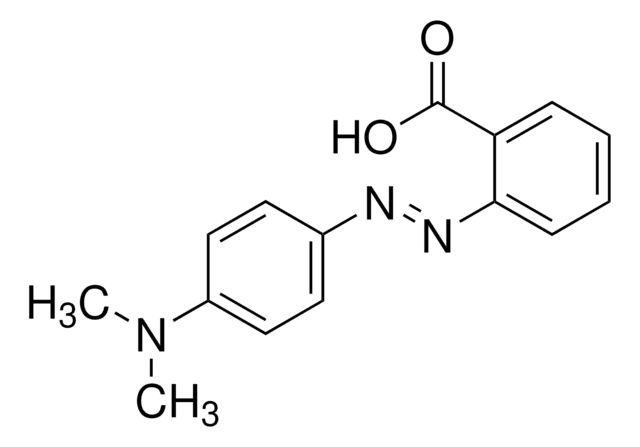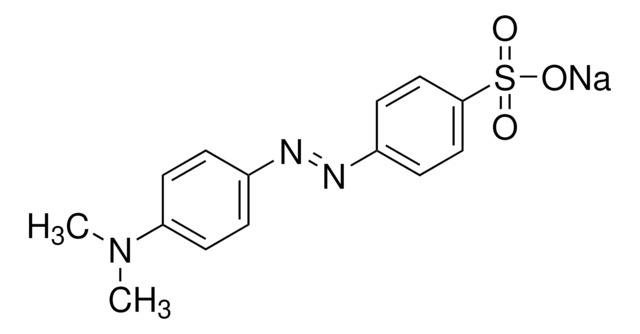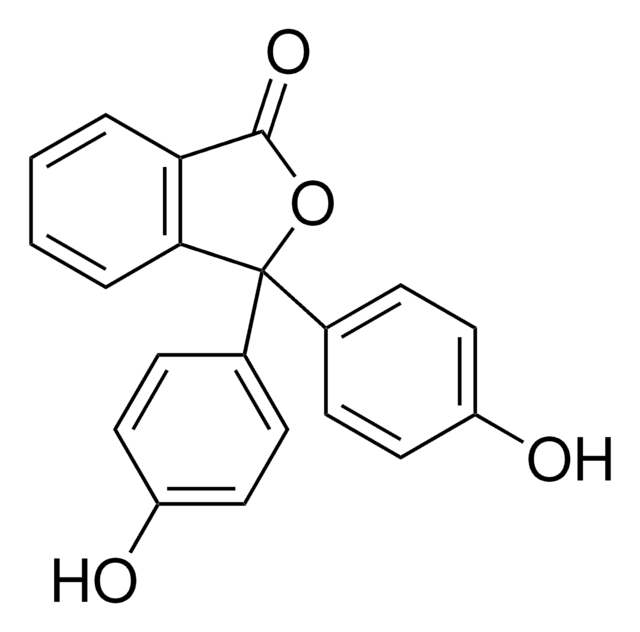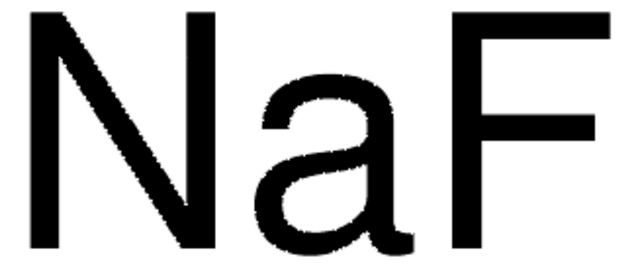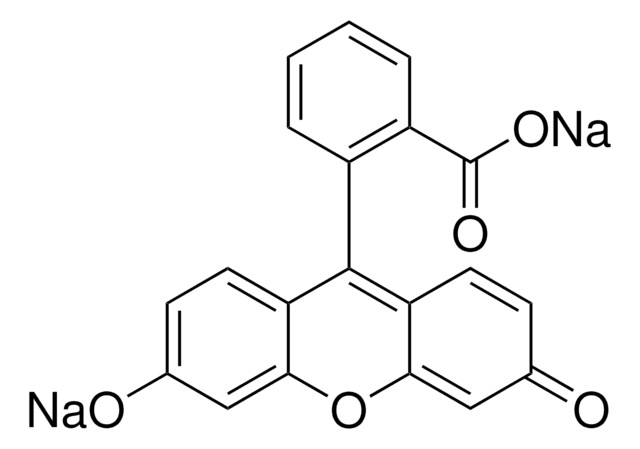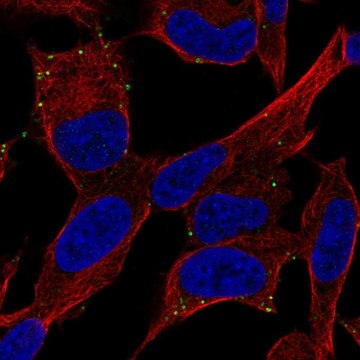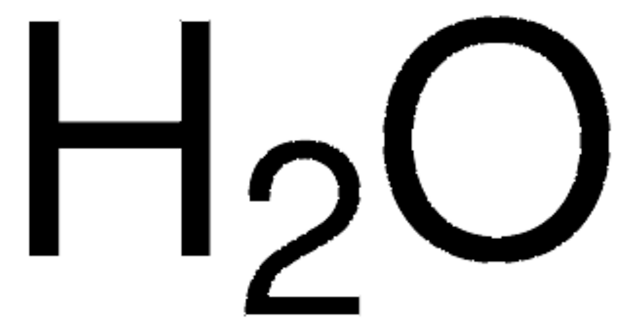All Photos(1)
About This Item
Empirical Formula (Hill Notation):
C15H15N3O2
CAS Number:
Molecular Weight:
269.30
Beilstein:
1843037
MDL number:
UNSPSC Code:
12352107
PubChem Substance ID:
Recommended Products
form
liquid
availability
available only in Japan
pH
4.2-6.2
SMILES string
CN(C)c1ccc(cc1)\N=N\c2ccccc2C(O)=O
InChI
1S/C15H15N3O2/c1-18(2)12-9-7-11(8-10-12)16-17-14-6-4-3-5-13(14)15(19)20/h3-10H,1-2H3,(H,19,20)/b17-16+
InChI key
CEQFOVLGLXCDCX-WUKNDPDISA-N
Looking for similar products? Visit Product Comparison Guide
Suitability
for titration
Signal Word
Danger
Hazard Statements
Precautionary Statements
Hazard Classifications
Eye Irrit. 2 - Flam. Liq. 2
Storage Class Code
3 - Flammable liquids
WGK
WGK 1
Flash Point(F)
55.4 °F
Flash Point(C)
13 °C
Regulatory Information
新产品
Choose from one of the most recent versions:
Already Own This Product?
Find documentation for the products that you have recently purchased in the Document Library.
Oana Alexandru et al.
Journal of neuro-oncology, 102(1), 9-18 (2010-07-17)
A major focus of brain cancer research today is to translate understanding of glioma biology into advances in treatment, by exploring the potential of target therapy. Here we investigated the ability of three compounds belonging to the chemical class of
Chan-Ju Wang et al.
Acta crystallographica. Section F, Structural biology and crystallization communications, 66(Pt 1), 2-7 (2010-01-09)
Azoreductase 1 from Pseudomonas aeruginosa strain PAO1 (paAzoR1) catalyses the activation of the prodrug balsalazide and reduces the azo dye methyl red using reduced nicotinamide adenine dinucleotide cofactor as an electron donor. To investigate the mechanism of the enzyme, a
Yuyi Yang et al.
Bioresource technology, 130, 517-521 (2013-01-17)
Azo dyes are toxic and carcinogenic and are often present in industrial effluents. In this research, azoreductase and glucose 1-dehydrogenase were coupled for both continuous generation of the cofactor NADH and azo dye removal. The results show that 85% maximum
Feng-Yun Wang et al.
Nanoscale, 3(8), 3269-3276 (2011-07-01)
Nanoporous and nonporous three-dimensional silicon nanowire arrays (SiNWAs) prepared with metal-assisted chemical etching method were investigated as photocatalysts in dye photodegradation systematically. In comparison with nonporous SiNWAs, nanoporous SiNWAs have higher surface area, larger pore volume, stronger light absorption and
Angel Martinez et al.
Proceedings of the National Academy of Sciences of the United States of America, 108(52), 20891-20896 (2011-12-14)
Noncontact optical trapping and manipulation of micrometer- and nanometer-sized particles are typically achieved by use of forces and torques exerted by tightly focused high-intensity laser beams. Although they were instrumental for many scientific breakthroughs, these approaches find few technological applications
Our team of scientists has experience in all areas of research including Life Science, Material Science, Chemical Synthesis, Chromatography, Analytical and many others.
Contact Technical Service